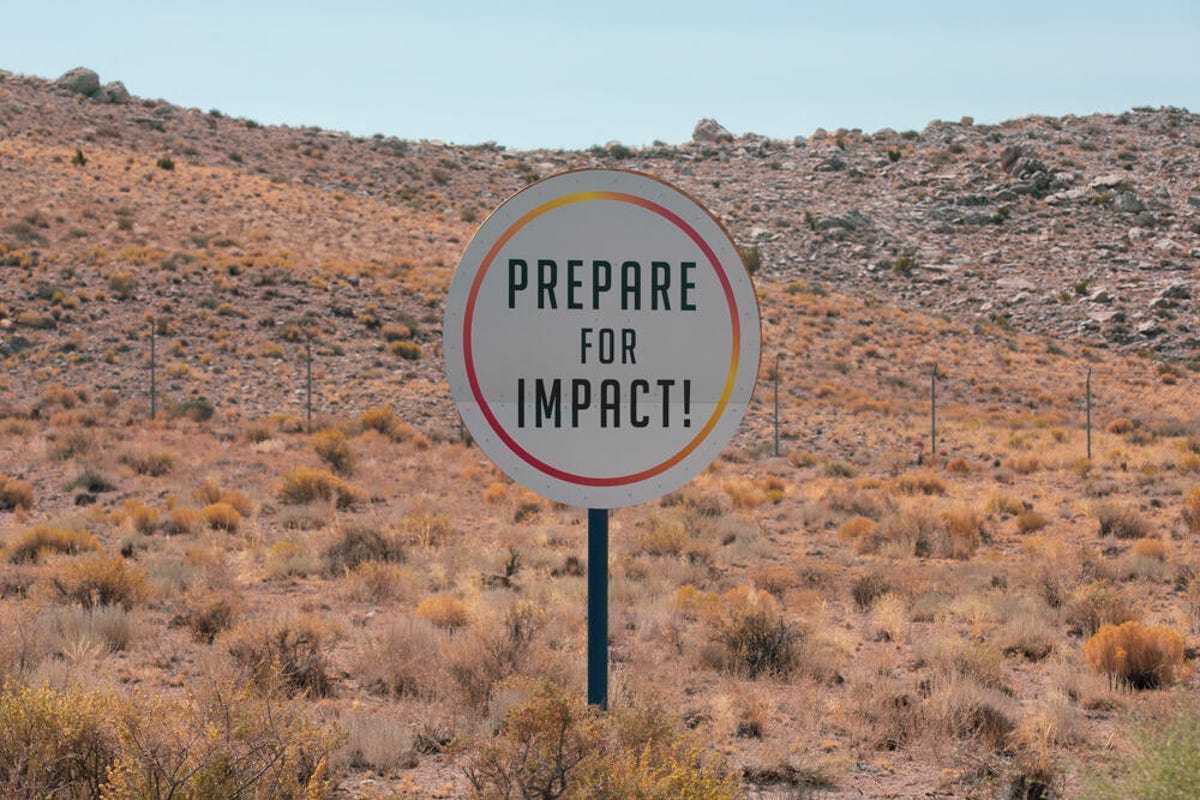Barringer Meteorite Crater: Up close with the world's best preserved impact crater
In the high desert of Arizona, you'll find a crater from a jaw-dropping impact. Here's what it looks like.

Fifty thousand years ago, a meteor ripped through the skies over what is now Arizona, impacting Earth with the force of 20 million tons of TNT. Located in the vast high plains of the northern Arizona desert, the Barringer Meteorite Crater is the largest meteor impact crater in the United States, and the best preserved on Earth.
In astronomy terms, the asteroid was tiny -- just 150 feet (46 meters) across -- but traveling at roughly 26,000 miles an hour, or 7.2 miles per second, it smashed into the surface of this high plateau with massive force.
Within seconds, millions of tons of rock was thrown around the surrounding landscape, opening a crater three-quarters of a mile across and 700 feet (213 meters) deep. A shock wave blasted out in every direction, causing destruction for miles.
In just 10 seconds, the entire impact event was over.
About 10 seconds before impact, approximately 100 miles (161 kilometers) above the Earth's surface, the friction superheats and vaporizes the leading surface of a meteor as it enters Earth's atmosphere.
As it speeds toward Earth, the meteor begins to fragment, creating a brilliant flash of light streaking across the sky.
Upon impact, millions of tons of rock were uplifted and strewn about. House-size boulders rest gently on the crater's lip.
Telescopes around the rim on viewing platforms give a closer look at some of the geologic features and the crater floor hundreds of feet below.
The impact site is nearly a mile across, over 3 miles in circumference, and 550 feet (168 meters) deep. The scale of the impact crater is enormous -- large enough to engulf a 60-story building or to accommodate 20 football fields on the floor of the crater.
Numerous attempts have been made to locate the remains of the meteor that created this massive pit in the Earth, but attempts to find any single large mass buried beneath the crater were unsuccessful.
Very little of the original mass of about 150,000 tons survived the impact. In total, just about 30 tons of actual meteorite fragments have been found in the area of meteor crater.
This image shows a shaft that was dug at the center of the crater floor in an attempt by Daniel Moreau Barringer and his Standard Iron Company to locate and mine the hoped-for buried deposit of nickel-iron.
The meteor mass is calculated to have been approximately 150 feet (46 meters) in diameter, weighing 150,000 pounds, and containing sufficient amounts of iron-nickel to produce about 42,000 automobiles.
It's hard to imagine the scale of the impact as you stand at the edge on the viewing platforms of the crater.
While a small percentage of the meteor mass was vaporized on impact, about half of it was blasted to bits, raining tiny fragments down on the rim of the crater and the surrounding plain in a 7-mile radius.
The rest can be found in small to microscopic iron-nickel spherules and fragments beneath the crater floor.
This cream-colored rock is about 250 million years old and 260 feet (79 meters) thick. It contains fossils of brachiopods, cephalopods, and other forms of life that flourished in ancient seas.
The explosion that formed the meteor crater lifted and overturned this section of Kaibab limestone onto the crater rim.

